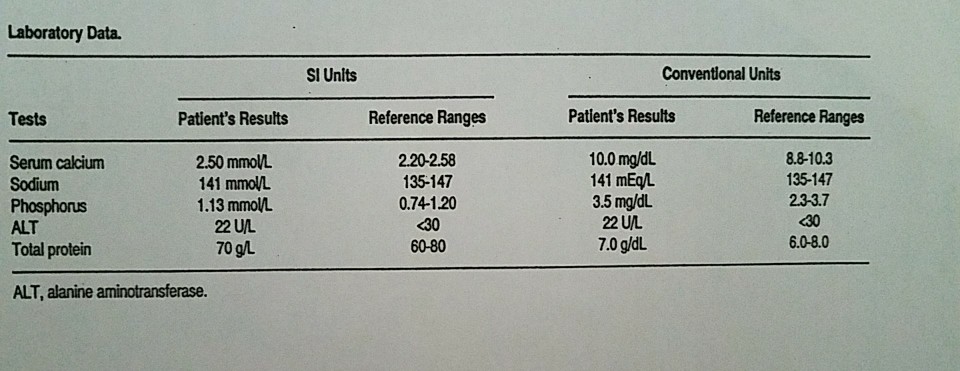A 57 year old man presented to his physician for an annual physical examination. He had no specific complaints and claimed to be in good health. No abnormal findings were presented on physical examination. Laboratory findings were unremarkable except for an elevated total alkaline phosphate (ALP) of 249 U/L (reference range, 25-90 U/L). There was no indication of liver disease by palpitation, malignancy by increased globulin, or bone dyscrasia.
A 57 year old man presented to his physician for an annual physical examination. He had no specific complaints and claimed to be in good health. No abnormal findings were presented on physical examination. Laboratory findings were unremarkable except for an elevated total alkaline phosphate (ALP) of 249 U/L (reference range, 25-90 U/L). There was no indication of liver disease by palpitation, malignancy by increased globulin, or bone dyscrasia. The patient did not recall any incident that may have induced any medication other than aspirin (approximately four tablets per month). Laboratory results are shown. Repeated laboratory tests yielded similar findings.
1. What condition(s) could be responsible for the ALP elevation?
2. What tests could be ordered for the differential diagnosis of elevations in ALP?
3. What other biochemical tests are used for the diagnosis of bone disorders?
The post A 57 year old man presented to his physician for an annual physical examination. He had no specific complaints and claimed to be in good health. No abnormal findings were presented on physical examination. Laboratory findings were unremarkable except for an elevated total alkaline phosphate (ALP) of 249 U/L (reference range, 25-90 U/L). There was no indication of liver disease by palpitation, malignancy by increased globulin, or bone dyscrasia. appeared first on Academicheroes.com.
